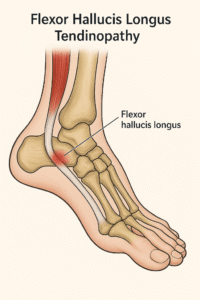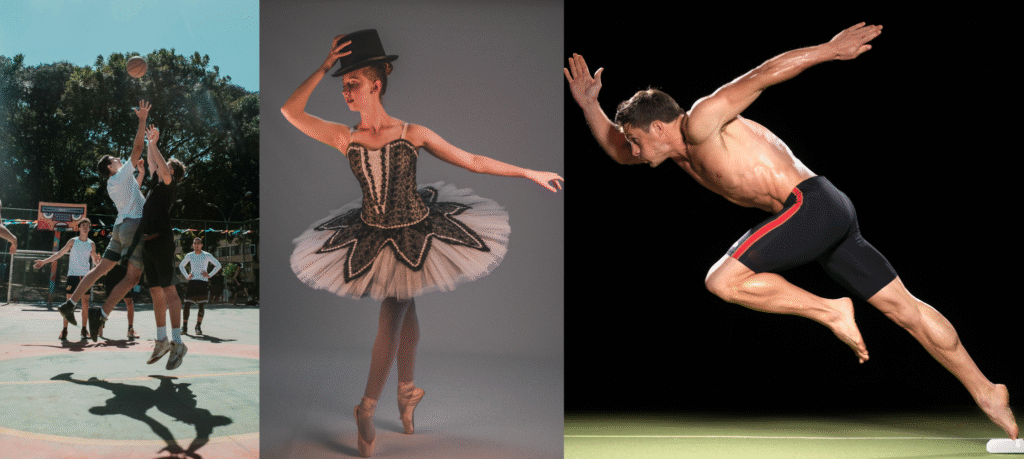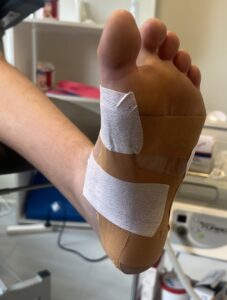FHL Tendinopathy: A Hidden Cause of Ankle and Big Toe Pain
Struggling with pain at the back or inside of your ankle, especially when running, dancing, or jumping? You could be dealing with Flexor Hallucis Longus (FHL) tendinopathy — a condition often misdiagnosed as Achilles or Tibialis Posterior tendon pain. Learn how to spot it, treat it, and get back to doing what you love.
What Is Flexor Hallucis Longus Tendinopathy?
Flexor Hallucis Longus (FHL) tendinopathy is a condition involving irritation or overuse of the FHL tendon — a long, powerful tendon that runs along the inside of your ankle and inserts underneath the base of your big toe.

This tendon is responsible for helping you point your foot downward (plantarflex) and stabilise the big toe during walking, running, or pushing off. It plays a critical role in activities requiring balance, explosive movement, and fine control — like ballet, sprinting, or jumping.
When the FHL tendon is subjected to repetitive stress without adequate rest or support, it can become inflamed, strained, or develop micro-tears — leading to pain, swelling, and functional limitations.
Who’s Most at Risk?
While FHL tendinopathy can affect anyone, it's especially common in athletes and active individuals who place high demands on their feet and ankles. Those at higher risk include:
- Ballet dancers (especially en pointe)
- Runners
- Footballers
- Gymnasts
- Basketball players
- Hikers tackling uneven ground
These activities require repetitive toe-pointing, pushing off, and absorbing force through the forefoot and ankle — all of which stress the FHL tendon.

Common Signs and Symptoms
FHL tendinopathy can be tricky to diagnose because the pain often mimics other conditions like Achilles tendinopathy or posterior tibial tendon dysfunction. Look out for:
- Pain when pointing the foot down (plantarflexing)
- Dull ache at the back or inside of the ankle that may become sharp during high-load activities like sprinting, hopping, jumping or tiptoe balance
- Pain under the big toe, along the arch, or deep inside the ankle joint
- Swelling or tenderness at the back or inner ankle
- Pain with movement or pressure on the big toe
- Clicking sensations, especially when flexing the toe or ankle
Symptoms may appear gradually and worsen with activity, or they can flare suddenly after a spike in training or performance.
If you are unsure about your pain, and think it may be an Achilles tendon or Tibialis Posterior tendon issue, feel free to click on our Achilles tendon blog, or Tibialis Posterior blog to read more.
What Causes FHL Tendinopathy?
The root cause is usually overuse and overload. This can happen when:
- There’s a sudden increase in training (e.g., intensity, duration or frequency)
- Recovery time is limited between sessions
- You’re training on hard, uneven, or sloped surfaces
- You’re wearing unsupportive or worn-out footwear
- There are biomechanical issues in the foot or ankle, such as poor control or collapsed arches
If the FHL tendon doesn’t get time to recover from repeated stress, it breaks down faster than it can repair — leading to pain and dysfunction.
How Can You Manage and Treat It?
If you’re experiencing symptoms of FHL tendinopathy, early intervention is key. The longer you wait, the longer it may take to recover. Some simple starting points include:
- Reduce load: Take rest days or cross-train with lower-impact activities
- Lower intensity: Modify your training sessions or competition load
- Stretch: Gentle calf stretches to improve mobility
- Heel lifts: These reduce strain on the tendon during walking and running
- Strapping: Taping the foot and ankle can reduce painful movement
- Footwear upgrades: Supportive shoes with proper arch and heel control
- Orthotics: Custom devices can correct foot alignment and offload the FHL tendon


It’s important to avoid “pushing through” the pain. FHL tendinopathy can worsen without proper care and may lead to longer-term damage or even tendon rupture in extreme cases.
When to See a Podiatrist
If you’ve had symptoms for more than a week, or if the pain worsens with activity, it’s time to get a professional opinion. A sports podiatrist will assess your gait, strength, flexibility, and biomechanics, and create a plan that targets the root cause — not just the symptoms.
At Sports and Injury Management in Diamond Creek, I specialise in treating active people with foot and ankle pain, including:
- Dancers with posterior ankle pain
- Runners struggling with big toe or arch pain
- Footballers with overuse injuries
- Young athletes with growing feet and imbalances
Your treatment plan may include a mix of manual therapy, exercise rehab, orthotics, and load management strategies tailored to your sport and goals.
Take the First Step Toward Pain-Free Movement
FHL tendinopathy doesn’t have to sideline your training or performance. With early diagnosis and the right rehab plan, you can get on top of this pain and back at performing at your best.
At Sports & Injury Management, I work with athletes and weekend warriors, who are struggling with persistent, stubborn, niggling injuries, and work together on a specific treatment plan to help fix this pain. This allows those athletes and warriors to become stronger, return to exercising, training, participating in sports and live pain free.
Recovery takes time, but persistent pain shouldn't hold you back. If you've tried everything and still not seeing improvement, your Diamond Creek Podiatrist is ready to help. Call today or book online to take the next step toward pain-free movement.
SIM – Getting stronger, staying active
